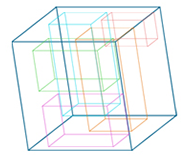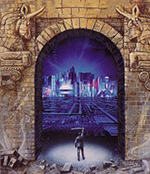 SpaceBase, by Parallel Universe, is real-time spatial database server software for applications that require very low latencies or very frequent updates. Geometric structuring of data has many practical uses. Massively multiplayer online games (MMORPG), military simulations, c4i systems, certain graphing scenarios, and dynamic moving object location services all rely on solutions like SpaceBase. Understanding spatial data stores requires a brief explanation of their differences from common relational databases in concept and application. Parallel Universe is on my Quora post of YC S12′s best startups. SpaceBase could eventually be a standard used alongside development ecosystems like Unity3d.
SpaceBase, by Parallel Universe, is real-time spatial database server software for applications that require very low latencies or very frequent updates. Geometric structuring of data has many practical uses. Massively multiplayer online games (MMORPG), military simulations, c4i systems, certain graphing scenarios, and dynamic moving object location services all rely on solutions like SpaceBase. Understanding spatial data stores requires a brief explanation of their differences from common relational databases in concept and application. Parallel Universe is on my Quora post of YC S12′s best startups. SpaceBase could eventually be a standard used alongside development ecosystems like Unity3d.
Spatial Database Concepts
Traditional transactions typically only affect two separate database objects. Spatial data, as explained by Parallel Universe, is unique in usually having a high level of concurrency. Spatial objects often model real-world things, which tend to affect other objects in close proximity. Changes to a set of nearby objects are indivisible and need an all-or-nothing atomic model. Objects which are far apart do not typically interact, meaning changes to distant objects can be carried out separately and in parallel.
Spatial Database Applications
As stated at the beginning, massively multiplayer online games (MMORPG), military simulations, c4i systems, certain graphing scenarios, and dynamic moving object location services all rely on solutions like SpaceBase. Epidemic outbreaks and military intelligence have both been studied using technology originally intended for online games. World of Warcraft’s Corrupted Blood Incident provides a novel real-world precedent of spatial databases in academic research.
Logistics and warehousing also benefit from spatial databases. Fulfillment centers like those used by Amazon.com rapidly manage large quantities of diverse products. Efficiently storing that inventory requires considering the combined physical dimensions of multiple items. Another factor is the turnover rate of specific items. Spatial databases are better than flat databases for these types of problems because spatial objects are more complicated than their one-dimensional counterparts.
SpaceBase by Parallel Universe
SpaceBase is a multi-product suite currently consisting of Galaxy, Quasar, Pulsar, and demo client app called SpaceShips.
An always-consistent model of atomicity, consistency, isolation, and durability (ACID) is used by SpaceBase. Similar systems are typically designed as eventual consistency. Those systems reconcile transactions using BASE extropy (basically available, soft state, eventual consistency), also known as last writer wins.
Galaxy is a high-performance in-memory data-grid (IMDG) that can serve as a basis for building distributed applications that require fine-tuned control over data placement and/or custom distributed data-structures. Updating many objects concurrently means data is often outdated before changes can be written to disk. Galaxy directly addresses three core distributed memory problems: data partitioning, distribution consistency, and fault tolerance.
Quasar is a Java library that provides high-performance lightweight threads (“fibers”), Go-like channels, Erlang-like actors, and other asynchronous programming tools. Pulsar is a Clojure API for Quasar that provides high-performance lightweight threads, pattern matching, and both actors and syntax that are Erlang-like.
SpaceShips is a Java demonstration simulating tens of thousands of battling spaceships.
Final Thoughts
Ron Pressler, Parallel Universe co-founder and CEO, admits sophisticated products like SpaceBase require a lot of development. SpaceBase is still in alpha and ultimately an experiment in distributed systems design. Product information doesn’t have any benchmarks. There’s also little discussion yet of how data remains consistent between multiple clients accessing SpaceBase through network protocols that add additional latency. I would like to see more demo apps, particularly a simple multi-user game that communicates with SpaceBase only through TCP/IP.
There’s currently no open-source standard for spatial databases. Most developers of multiplayer worlds either write their own code for massively multiplayer online environments or license MMO code from another company. Independent developers can’t create such games because the resources required to get started form a barrier to entry. Other types of programmers, including in-house developers at large corporations and academic institutions, are similarly limited in writing potentially great applications that solve very big problems and require spatial database technology. Therefore, SpaceBase by Parallel Universe might be a very disruptive innovation.
SpaceBase could become the MySQL of spatial databases.



